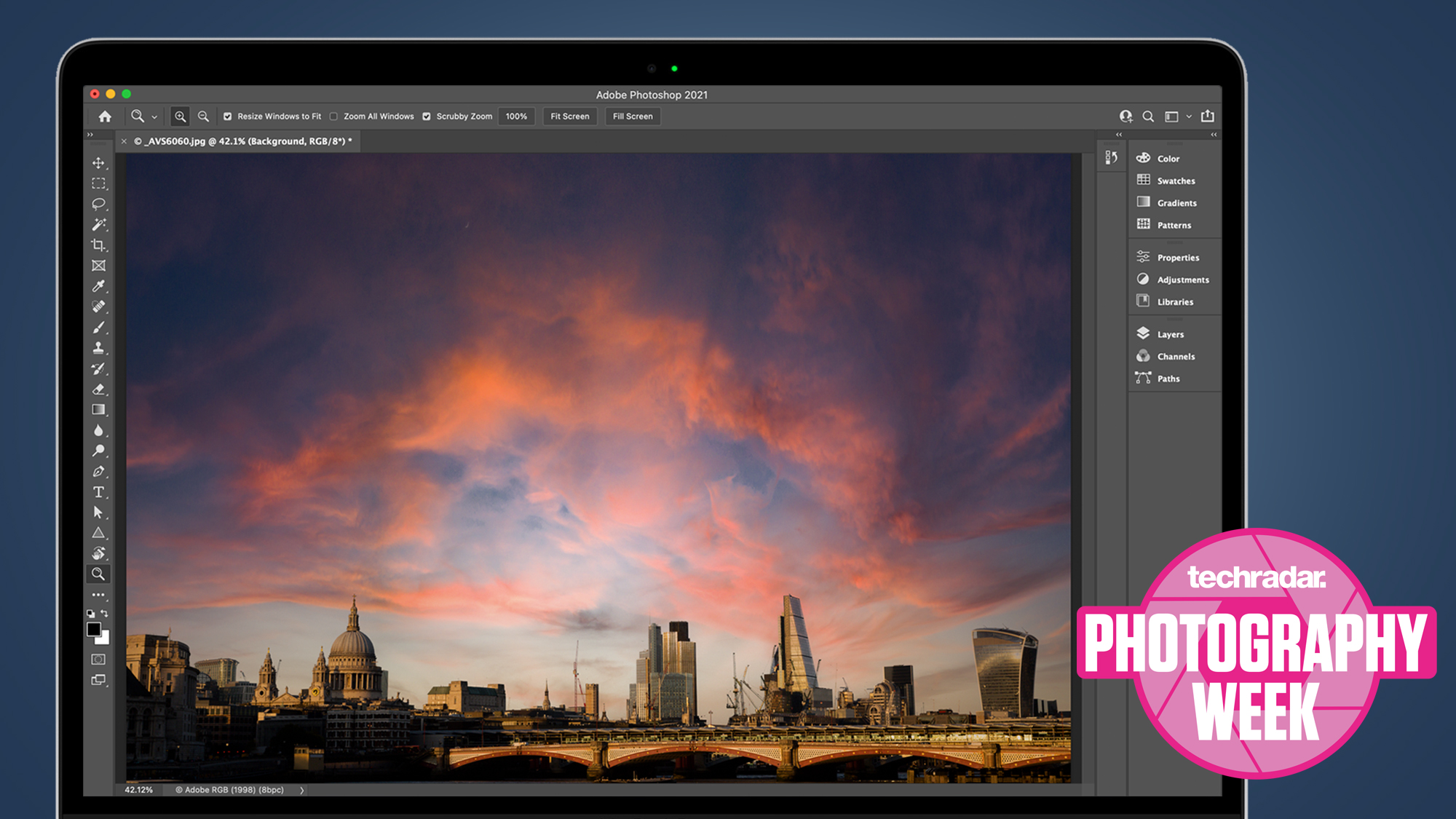
As it is expected of something that is driven by the AI and the learning of the machine, the ‘Sky’ replacement tool of Photoshop is evolving rapidly: Less than a year after its debut, the feature has just received a great update in The August update of Photoshop.
But what exactly is the ‘Sky Replacement’ tool and how good it is? Well, if the gray skies and the tenuous winter light are familiar, you will know that it is not always easy to get the shot you have imagined in your mind soaked by the sun.
Arriving at a location at Blazing Sunshine just so that the weather gets steadily as soon as you receive your camera on a tripod, all these scenarios are a standard rate for photographers in countries around the world. Have you been to Iceland? Rest our case.
If your landscape images lack a bit of pizazz, you have two options: I patiently wait for the climate to start cooperating, or taking photoshop on your unlikely offer to sound instantly and with photographs that take your gray weapon skies and replace them with something. A little jazzier.
Replacement of heaven in the photos has been possible with Photoshop since the first days of the software, the sky, it is necessary to eliminate, fall in a new, better aspect. But the current version of Photoshop, and its refreshing “Sky ‘replacement tool, is totally capable. Not only will it detect: accurately, with precision, where the sky is in its image, but it will mask it accurately and automatically will mask and offer you a replacement.
That’s not all, it will also adjust the color balance in your image to match the new sky. An image taken under the rain clouds will only be simple rare if it falls into an impressive sunset, but does not make any adjustment to the white balance or tones of the original image.
- Choose the correct image.
Not all the images in your collection will be a great candidate for the sky replacement tool. In particular, make sure your image is well exposed. Photoshop is going to make an effort to change the color balance of its frame, but if the foreground, everything except the sky, has little exposed shadows or more outstanding exposed, it will endeavor.
Some images will not work at all: Most options in Photoshop Sky Sky Library are designed to be used with photos taken from a perspective that, in general terms, it is triggered perpendicular to the horizon.
So, if you have a bird’s throw, for example, it was taken while your camera is dyed in the sky, you can be sure it looks quite rare, or require a lot of finely before having a presentable shot.
You should also make sure that your close-up theme is a large sky replacement. The functions are excellent with urban landscapes, as well as rural landscapes composed classically, but if you have something small in the frame (a person who stands on a hill, for example) you may find unpredictable results.
- Find the sky replacement tool.
The good news is that the preview of how your photo will be seen with a sky replacement, so you can always open an image and give you a turn without committing a lot of time and energy. The sky replacement tool lives under the ‘Edit’ menu.
It is worth thinking about your editing environment: Subtle results are usually the best, so the more carefully configure your monitor, and the most environmental light that surrounds it, more precisely you can work. This is particularly crucial if you plan to print anything.
The way in which the sky replacement tool changes its image is quite smart, leaves its original image intact as a blocked background layer, then applies a series of masked layers that change the illumination and color of its original, as well as mask The sky on the background.
While saving your image as a native PSD, you can leave Photoshop and re-edit these layers, although you can not make changes in your new sky without repeating the process of working through the Sky Replacement dialog box.
- Choose a sky
Now is the moment of fun. Once you have clicked Sky replacement, you will see the corresponding dialog box.
In your heart, this is quite easy to use. Click on the drop-down picture of the sky at the top and you will see options, many of them. Fortunately, the selection of heaven is clustered thematically, so “blue skies” to encourage climate, “spectacular” by adding a little punch and “sunset” for those images that simply could not bother waiting.
Pay, of course, to try different options. The latest version of Photoshop gives you even more options thanks to a new menu on the Sky Preset Fly-Out menu, which takes you to the Adobe Discover site with more options.
Remember, the sky replacement tool not only attempts to find out where your horizon is and eliminate it, it is also subtly changing the color balance in your image. Different images will want different skies, so even if you do not want to stay trapped with the sliders and options below, you may still need to kiss some frogs before landing on the perfect alternative to your original shot.
In its simplest, the sky replacement tool requires two clicks, one to load it from the edit menu, and another to accept the default option when you click OK. You should be careful to make rolling changes, in the previous correct image, the dramatic gray clouds do not really match the blue blue water at the bottom of the image, betraying the edition we have done.
- Make some adjustments.
However, you can adjust your replacement sky. Editions start with you by simply clicking on your new sky layer, once you have grabbed it with the mouse pointer, you can remove it, which allows you to place any point of interest exactly where you want them.
Commercial
If you make changes in this way, keep the sliding control in mind, this allows you to make the sky layer larger or smaller, allowing you to make sure that the sky covers its frame from the edge to the edge.
Photoshop generally do a pretty nice job of adjusting the brightness of your original image, but the dialog box gives you options for fine tuning. In Sky’s settings, you can adjust the exposure of your sky up or down, as well as heating or cooling the color temperature to match your original image.
To the foreground settings, you get a similar pair of sliders. Our suggestion is using both at the same time, and trying to make them “gather in the middle” to produce a photorealistic effect. You will have a better chance to get things exactly correctly if your original image is technically good, not too exposed, and the right white balance, for example.
You can also adjust the area of your image where the horizon meets the new sky. For this, click on the magnifying glass in the Sky Replacement dialog box, or use cmd + to enlarge. Work 100% or even 200% and scan carefully along the horizon to see if there are broken-looking bits, Photoshop is wrong.
In our experience, the sky replacement tool does a noticeably accurate job, but if you find something, press B to select the sky brush and paint in more sky by clicking and dragging.
- Finishing touches.
Commercial
Happy with your new image? You must make an option more before leaving, whether you want its effect applied to a single new layer or as a series of adjustment masks and adjustment layers, in the ‘Exit A’ box. Anyone who chooses, its original image will be kept as a blocked bottom layer. If you think you may want to go back to the image and edit the sky plus, choose new layers.
Once you have done that, the new layer called Sky has the new sky in it, and can be transformed, expanded, reduced, and so on in the same way you would with another layer in Photoshop. It also has the trimming mask of its horizon. Again, this can be edited in the same way as more masks.
The layer called close-up lighting is a mixed layer that changes how bright its original foreground image, while the close-up color layer is the one that tries to coincide with its chosen sky with its foreground. Again, all these layers can be edited as any other layer of Photoshop, including its opacity, mix mode, etc.
There are lots of editing that can still do so that things look perfect. Almost all that can not do is return to the replacement sky dialog box and change the original effect, but with its original image still intact, you can always duplicate it (cmd-j), group the rest of the replacement sky and spot it, And start again.


![How To Fix Error [pii_email_4a54df77285983c5da74] Instant Solved](https://justsbuzz.com/wp-content/uploads/2021/10/Solved-pii_email_019b690b20082ef76df5-Outlook-Error-1.jpg)
![how to solve [pii_email_cd4b80dbd951adb0d4dd]](https://justsbuzz.com/wp-content/uploads/2021/10/ms-outlook-error-1-780x415.jpg)